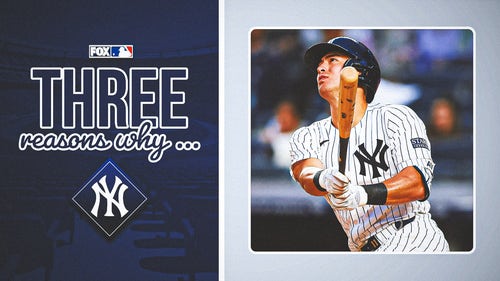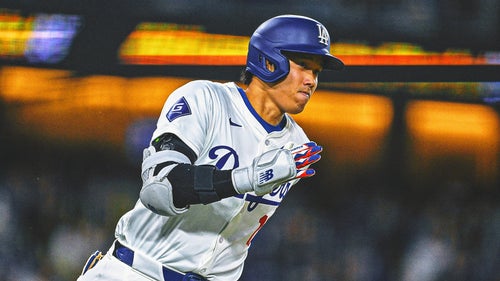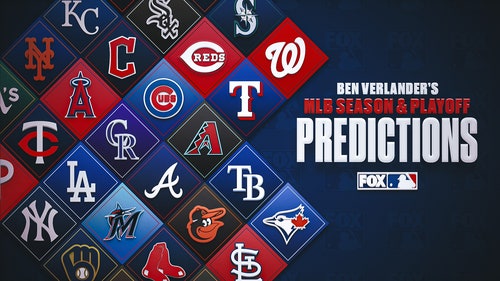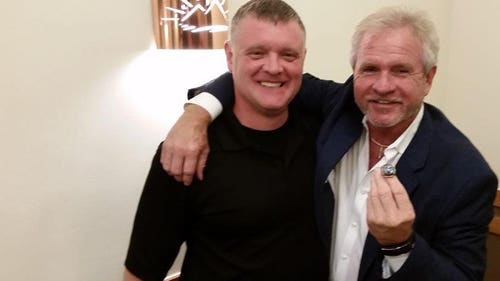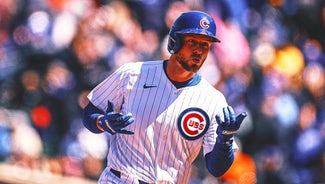
Phillies catcher J.T. Realmuto's three pillars of throwing out baserunners
Nobody in MLB is better at throwing out would-be base stealers than Phillies catcher J.T. Realmuto.
Since 2016, the all-world backstop has sent 118 runners back to the dugout as sadder and more-out versions of themselves. That’s 37 more caught stealings than second-place Martin Maldonado. While Realmuto’s caught stealing rate of 38% is only third-best over that span, Statcast’s new catcher throwing metrics rate the 32-year-old veteran as far and away the best in baseball at mowing runners down.
The meta-game of base-stealing is essentially a math equation:
Does the time between a pitcher’s first movement through their delivery to the ball hitting the catcher’s glove plus the catcher transferring the ball into their throwing hand and releasing it plus the ball's path to an infielder’s glove and subsequent tag beat a runner going from one base to the next?
As a catcher, Realmuto can only control three of those factors: his exchange time, his throwing strength and his accuracy. The sum of the first two are commonly referred to as "pop time" — from the pop of the catcher’s glove to the pop of the infielder’s. It should come as no surprise that Realmuto has the fastest average pop time in baseball.
And now that MLB’s new rules have led to a huge increase in stolen bases, keeping runners honest is more important than ever. So, before a recent Phillies home game, FOX Sports sat down with the two-time Gold Glove winner to chat about his three pillars of throwing out baserunners.
1. Building arm strength through long-tossing
Over the last half-century, long toss has become a fundamental part of the sport. The majority of MLB players, regardless of defensive position, have some type of long toss routine. (For the uninitiated, long toss is the practice of throwing baseballs really far, further than you’d likely ever need to in a game, for the purpose of building arm strength). Your favorite player probably long tosses, as does your least favorite.
But Realmuto’s long-toss strategy differs slightly from the average big leaguer’s.
"I long toss, but it’s usually never, like, a high long toss," he explained. "I try to match the height of the throw that I'd be throwing to second base."
Usually, long-tossing features two distinct phases: working out and pulling down. During the former, the throwing partners gradually separate from one another while focusing on achieving both height and distance on their throws. After reaching a max distance, the two players then work back closer to one another and focus on making their throws as low to the ground as possible.
For Realmuto, who as a catcher rarely has to throw a baseball more than 130 feet, it makes sense to solely focus on pulling down. He says he makes throws with as much velocity as possible, but always on a line. To him, it doesn’t really matter whether it bounces once or twice before reaching the target. That is, as long as the throw stays low.
The approach is clearly working: Since the start of 2021, Realmuto is averaging 87.8 mph on his throws to second, the second-best mark in baseball.
2. Athletic footwork
This is where Realmuto’s outrageous natural athleticism comes into play.
Notice that little hop Realmuto does just after the pitcher begins his motion? That’s the result of the baserunner breaking to second, which Realmuto can see out of his peripheral vision.
Three important things happen because of that little hop: 1) his chest angle opens up, which makes winding up his throw incrementally quicker; 2) his right foot rotates 90 degrees so that his toes are no longer facing second base, allowing him to more easily clear his feet; and 3) he loads both legs like a spring, ready to hop back out of his crouch a moment later.
Here’s another example: again, watch his chest, his right foot and the slight load back down into his squat.
Other, less physically freakish catchers simply can’t do this with the consistency and explosiveness of Realmuto. And while the athleticism is natural, actually learning and maintaining the footwork quickness takes time, repetition and focus. Realmuto explained that he’s incredibly intentional about it all and that he practices it all the time.
3. Practice variability in the exchange
Yes, Realmuto has a cannon of an arm, but his exchange (the process of the ball going from glove to hand) is equally elite. The Phillies catcher explained that he’s incredibly intentional about keeping a "clean pocket" during the exchange. In non-inside baseball speak, that’s about where specifically in the glove Realmuto is catching the ball — he always prefers the pocket, not the palm or the fingers. That allows for a much easier transition of the ball into the throwing hand.
For Realmuto, ensuring he maintains a clean pocket starts with drill work, more specifically, drill work that forces him to be uncomfortable.
"I make sure to practice transfers from realistic positions." He said "Off-balance transfers with my knees on the ground or transfers on low breaking balls or transfers on high fastballs. You only get that perfect pitch to throw on one out of every 10 times so it's key to practice everything else."
Realmuto said that he hasn’t made any significant changes to his stance or exchange or approach to throwing out runners in response to the new runner-happy MLB rules. And while he admits there are some downsides to the new normal — "Honestly, I don't love the runners being safe so often." — he’s generally in favor of the rule changes even if his raw caught-stealing numbers are down a bit.
"The action is great, a lot more guys running, more opportunities to throw," he asserted. "You wanna throw guys out. That's the most fun of being a catcher. Like blocking, even if you're good at blocking, it kind of sucks."
Jake Mintz, the louder half of @CespedesBBQ is a baseball writer for FOX Sports. He played college baseball, poorly at first, then very well, very briefly. Jake lives in New York City where he coaches Little League and rides his bike, sometimes at the same time. Follow him on Twitter at @Jake_Mintz.






































































































































